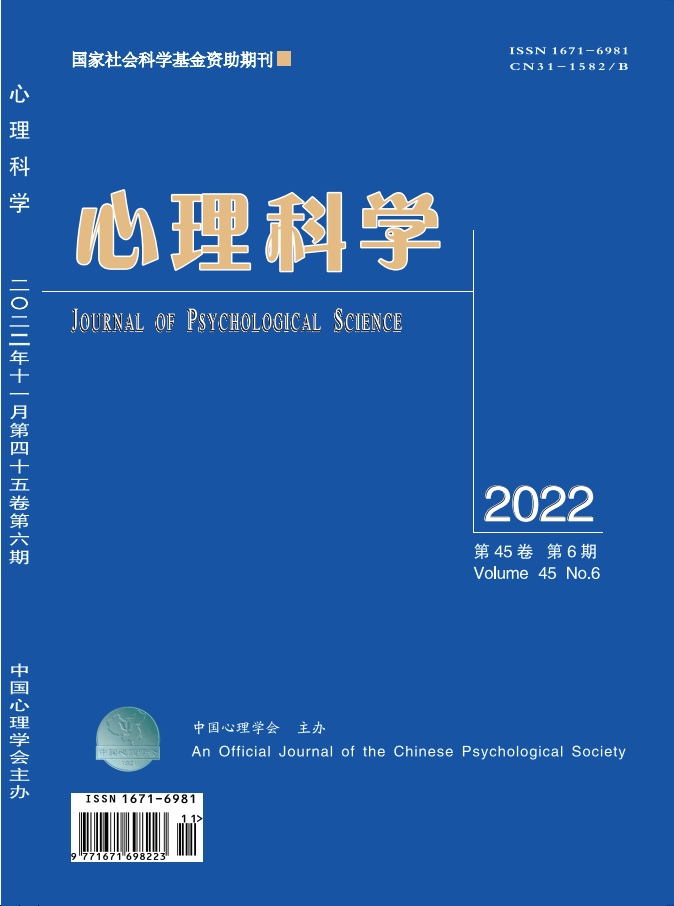|
|
Behavioral Profiles in Collectivism in China: Evidence from Students
2022, 45(6):
1422-1427.
According to previous studies, the correlations between measures of individualism and collectivism at individual level seem to be negligible; however, within-person variability was found to be cross-temporally stable, thus calling into question the unitary construct of collectivism. Researchers conceptualized individual differences through the lens of behavioral profile, which suggests that collectivism might consist of loosely connected, cross-temporally stable subdomains. Previous studies in this field were mostly conducted in western cultures such as America and Canada, and only interindividual variability was examined in Japan, representing eastern cultures. Similar to Japan, China is an interdependent-culture in East Asia. Herein, we proposed that behavioral profile hypothesis could also find its support in Chinese culture. We replicated previous studies, obtaining the consistent results.
Study 1 was a cross-sectional study, which included 404 students from a senior high school who participated in a paper-pencil test, consisting of following 6 cultural tasks: triad task, Framed Line Task, self-inflation scale, attribution task, loyalty/nepotism task, and Van de Vliert’s collectivism scale. The results showed negligible or very low correlations (mean r=.072) across these tasks. Study 2, which was a longitudinal study with two time portions (time 1 and time 2), included 708 participants who filled out an online questionnaire in the first portion of the study. The questionnaire included 4 cultural tasks: inclusion of other in the Self Scale, triad task, attribution task and loyalty/nepotism task. The obtained results were in line with those obtained in Study 1, where the mean correlation was .05. Among these 708 participants, 131 were included in the second portion and after 3 months and they filled out the same questionnaire on line, after which the test-retest analysis was made based on the data collected from 131 participants at time 1 and time 2. The size of test-retest correlations was moderate (.327<r<.515), except for one task with correlation coefficient of .252. As predicted, there were interindividual variability and intraindividual cross-temporally stability observed in Chinese samples.
The present study results were consistent with previous studies conducted in western cultures. The contributions of the current research are as followings: First, we replicated same researches, which revealed consistent results in China, thus obtaining support for loosely-connected behavioral profile beyond America and Canada, and increasing its cross-cultural university. Second, there are different theories explaining factors influencing collectivism in China such as modernization theory, pathogen prevalence theory, rice theory and climate-economic theory. Each of these theories was established based on different measures, which led to differing results. E.g., Talhelm et al. adopted self-inflation scale, loyalty/nepotism task, triad task and proposed that individuals from wheat counties were more interdependent than individuals from rice counties; Van de Vliert et al. used collectivism scale and proposed that individuals having to cope with climatic demands without adequate resources were more interdependent. However, these two propositions seem to contradict each other when comparing the scores measured by different tasks according to these two different theories. Herein, we measured individual attitudes by using self-inflation scale, loyalty/nepotism task, triad task and Van de Vliert’s collectivism scale in the same research (Study 1), finding that correlations across tasks were negligible, with one exception of a low correlation. This suggests that different culture tasks/different facets may explain contradiction of the propositions, so more facets of collectivism should be considered and adopted in the cross-cultural study of different regions in China so as to obtain more robust results.
Conclusion: The present study demonstrated intra-individual cross-temporally stability among various facets of collectivism in spite of zero or low interindividual correlations, which gave clear support for the application of loosely-connected behavioral profiles in Chinese culture.
Related Articles |
Metrics
|

